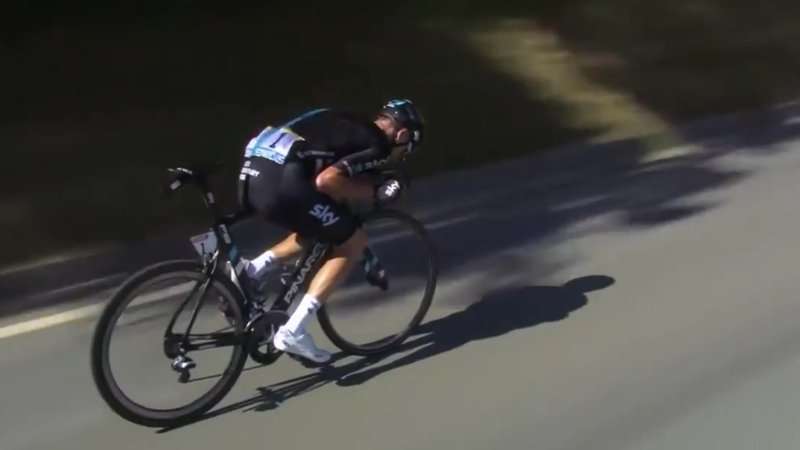Froome's precarious posture not an aerodynamic gain

During the descent of the eighth stage of the Tour de France, Chris Froome perched precariously forward on his frame to take a lead on his rivals. But researchers at TU Eindhoven, KU Leuven and the University of Liege claim that this is not, in contrast to what is often thought, of any benefit in terms of air resistance.
The British cyclist Chris Froome amazed his rivals in the eighth stage of the Tour de France by gaining time not in the ascent but in the descent. At the top of the Col de Peyresourde he accelerated away to win with a lead of 13 seconds ahead of Bauke Mollema and others at the finish. It was his posture that was the talk of the day. Sitting on the upper tube of his frame, hanging forward with his chest on the handlebars, he reached speeds of 90 km/hour.
Perilous
The rider got a lot of compliments for his amazing tactics but was also on the receiving end of some criticism due to the precarious nature of his position. Bert Blocken, professor of building physics at TU Eindhoven, decided to calculate whether this 'Froome position' actually produces less air resistance, as is often thought. Blocken had previously calculated the wind effects of the motorcycles and support cars in cycle races.
Less favorable
Using computer simulations Blocken analyzed the air resistance for the 'Froome position' and compared this with three other cycle postures: the normal 'safer' descent posture, a normal cycling upright position and a time-trial position. What this revealed was that the Froome position is no better aerodynamically than the normal descent posture – in fact, the air resistance is slightly greater, even though the difference is small (0.6%). The time-trial position is best and the normal upright position, as might be expected, is the least favorable with around 19% more air resistance than the safe descent position.
Big gap
However, since the position adopted by Froome was no better aerodynamically, how is it that he gained such a lead on the descent? Difficult to say, says Blocken. What certainly contributed was the sudden acceleration away by Froome at the summit, which enabled him to open up a big gap on his rivals. The television coverage also revealed that the chasing riders, like Quintana, did not adopt the ideal descent posture. It is also possible that this posture enabled Froome to generate more pedal power, but that is something Blocken's study was not able to calculate.
Provided by Eindhoven University of Technology




















